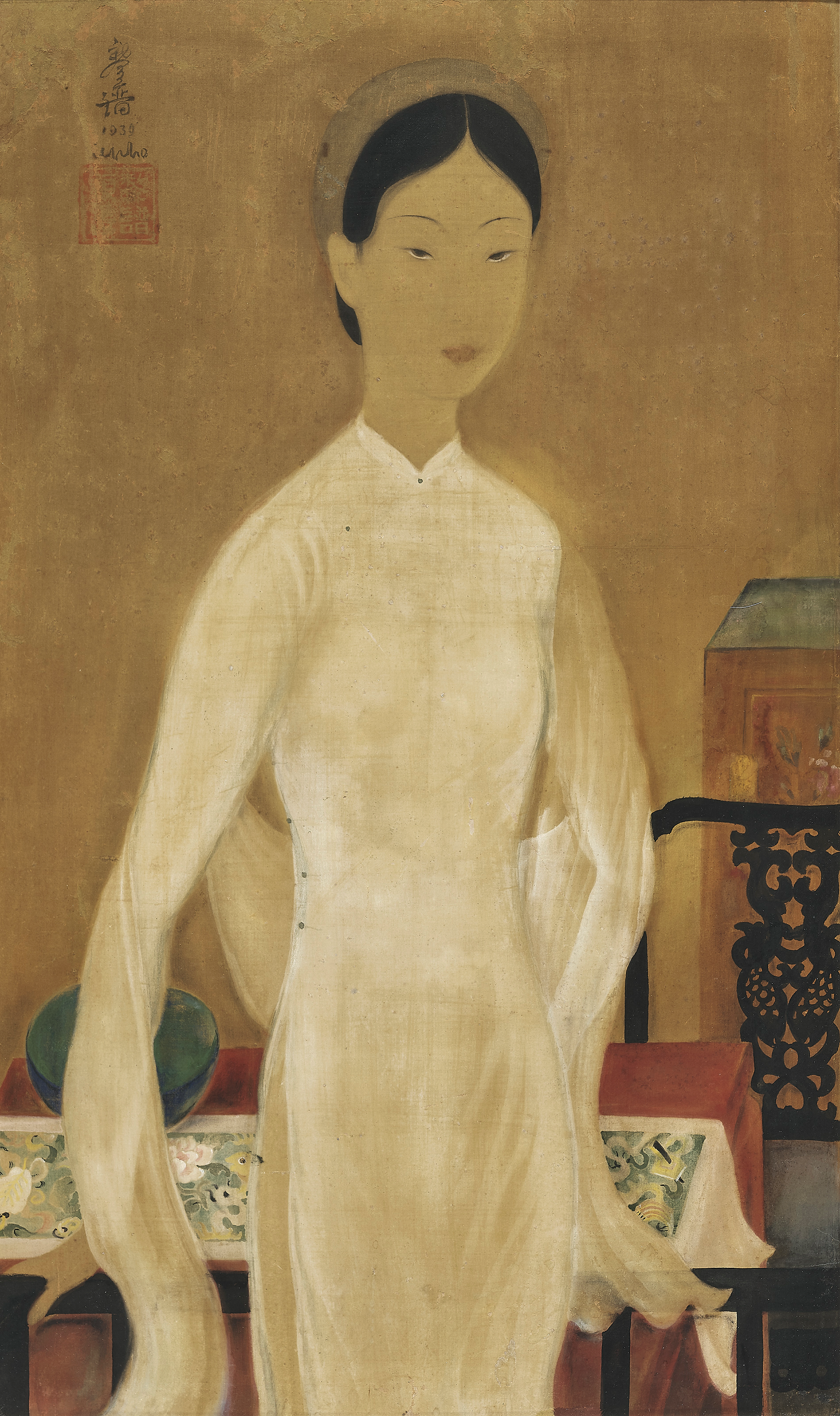
Le Pho (Vietnam/France, 1907-2001)
Le Bol Bleu (The Blue Bowl)
signed in Chinese and signed 'Le Pho', dated '1930' (upper left)
ink and gouache on silk
75 x 44.5 cm. (29 1/2 x 17 1/2 in.)
Painted in 1930
one seal of the artist
Provenance
Acquired directly from the artist in Paris by the grandfather of the previous owner
Thence by descent to the previous owner in 1980
Anon. Sale, Christie's Hong Kong, 23 November 2013, Lot 26
Anon. Sale, Christie's Hong Kong, 24 May 2021, Lot 38
Acquired at the above sale by the present owner
Price Realised HKD 2,750,000 at Christie's Hong Kong, 24 May 2021
LE PHO, LE BOL BLEU, 1930: THE LAST SIGHT
Le Bol Bleu (Blue Bowl) is an exceptional work by Le Pho on a historical, sentimental and artistic level.
Le Pho painted it in 1930, the very same year he graduated as part of the first extraordinary promotion of students accepted into the Hanoi School of Fine Arts, a nursery of talent for these young and ambitious painters.
Le Pho’s skill was already widely recognized : Victor Tardieu selected him as his right-hand man for the 1931 Colonial Exhibition in Paris, and Vietnam’s most important newspaper L’Indochine described him as ‘un vrai peintre’ (a true painter) (5 February 1930).
His compositions, whether oil on canvas, lacquer (though, very rare, due to his allergy to lacquer) or gouache and ink on silk were all extremely well received, the latter his pinnacle of excellence.
The young lady is standing upright and poised in a typical Hanoian interior. The painting meticulously documents the interior of an affluent Hanoi household down to the refined porcelain ware such as the blue bowl, unconsciously giving an insight to the lifestyle and refinements enjoyed by Hanoi’s society. She is fashionably yet modestly dressed, with a scarf draped elegantly around her elbows according to standards of propriety, with her hair neatly wound under her Tonkinese cap.
Her “salon” is strongly influenced by a Chinese style: the table is draped with a patterned silk doily on which is set the Chinese blue porcelain bowl, with a hardwood armchair and lacquered furniture behind the figure. The work displays its extreme rarity as one of the earliest compositions on silk from the artist, which is also observed in the unadorned background, the neat calligraphy and the imposing seal. The size of the work is also a particularly large rare one in the artist’s early oeuvre. The style of the work is particularly elegant and the painter depicts the main figure with a striking face of quiet grace and beauty.
The lady subject existed and was part of the painter’s private life. In 2001, we were conversing privately in his Parisian apartment (when his wife Paulette was not in the room). Le Pho also revealed that, as a young man, he fell in love with a beautiful young lady in Hanoi. One day he decided to approach her father to seek his approval to marry her. In Le Pho’s memory, the request was rejected as the father considered he had not shown enough respect. At that time, in this old-fashioned Confucian society that Le Pho would escape from, it was unimaginable for a young girl to disobey her father's will. From this moment on, the Hanoian bourgeoisie never saw this young lady dressed in any other colour than white, the colour of purity, perhaps a strong symbol of her love for him.
Despite his personal sadness, Le Pho made the decision to finally accept the loss of his loved one and chose to start a new life in the West, moving to Paris in 1937, pursuing a life of artistic excellence and being able to visit artists like Bonnard and Matisse whom he so admired.
It is no wonder that Le Pho chose a very traditional style to depict his lost love: the daughter of a “bourgeoise” family within the trappings of social status which led to her father’s refusal as his betrothed.
In this way, Le Bol Bleu is not only of great significance in Le Pho’s life, but also as a representation of Vietnam’s culture and mentality in the 20th century. After his permanent move to France, Le Pho’s tremendous skill in painting Vietnamese beauties on silk did not abate, but their surroundings became increasingly idealized and nostalgic, as a homage to the utopic Vietnam Le Pho left behind.
Garden landscapes or ladies with flowing hair standing in front of windows and on balconies amidst delicate drapery later became a significant part of Le Pho’s oeuvre, where story-telling and depictions of often idealized reconquest were the rule. However our work here was drawn from true life, while Le Pho was still physically a resident in Hanoi and not yet prone to romancing details.
Le Bol Bleu is not only an artistic masterpiece, but also a remarkable historical document of Vietnam.
Jean-François Hubert
Senior Expert, Vietnamese Art










